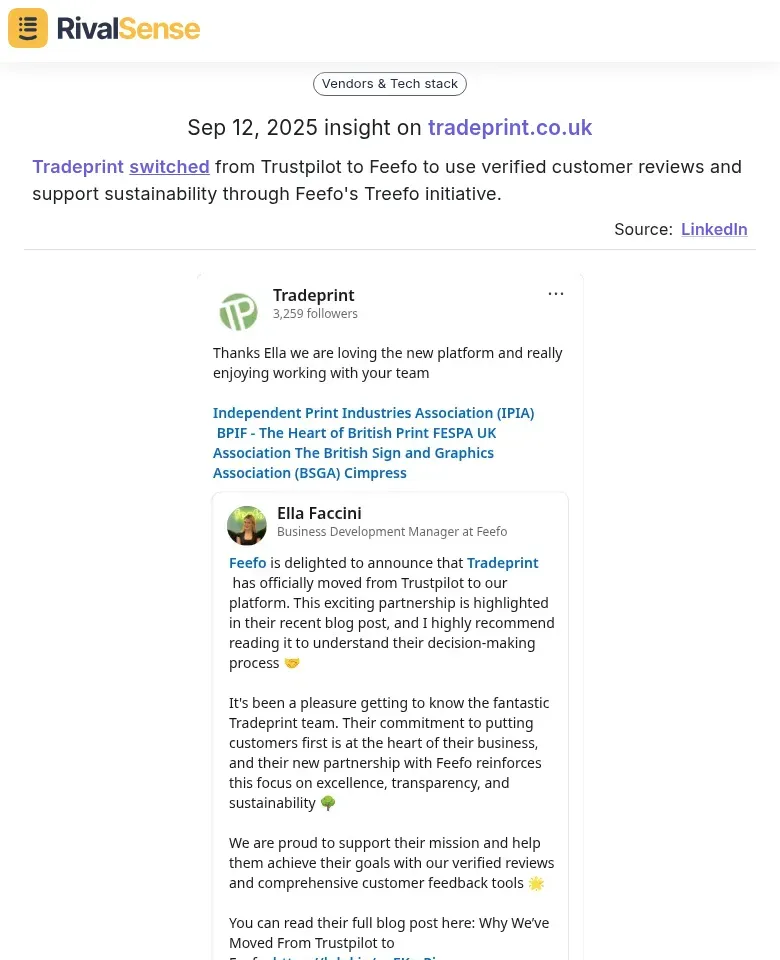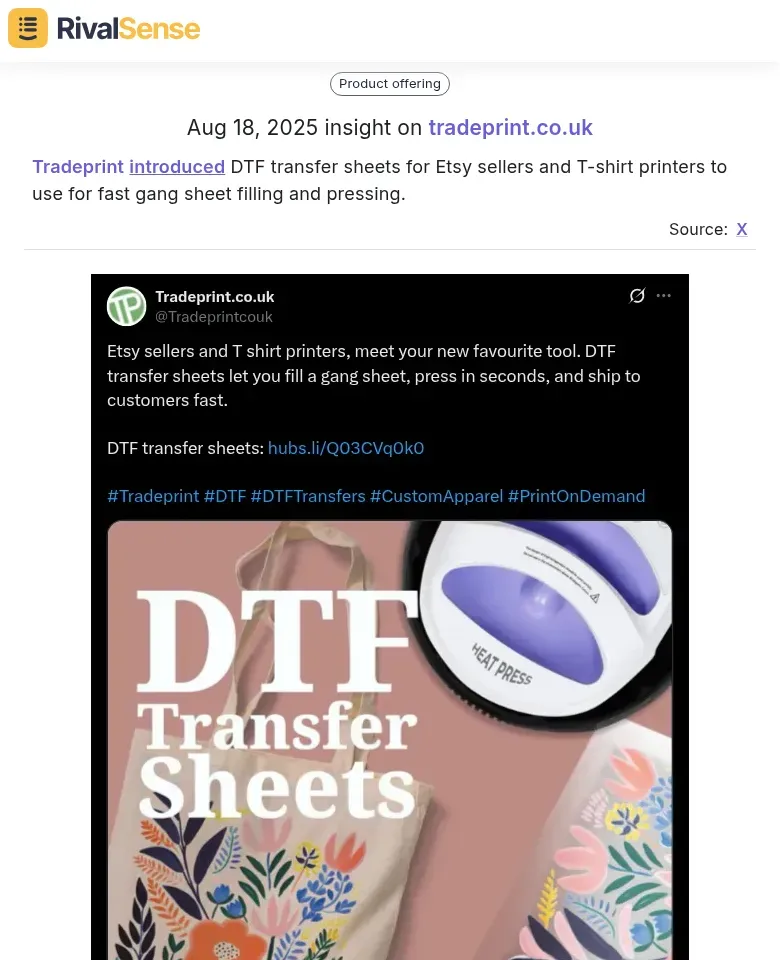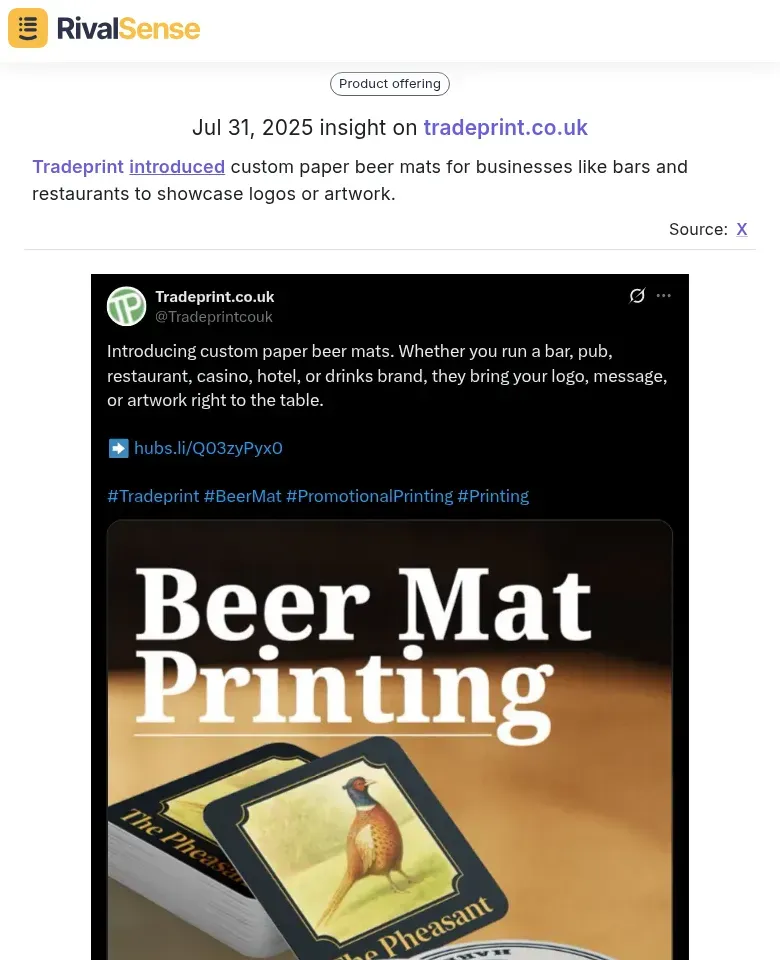Beginner's Guide to Printing Industry Competitive Benchmarking
Competitive benchmarking is the systematic process of comparing your printing business's performance, services, and strategies against key competitors to identify areas for improvement. 📊 In the printing industry, where margins are tight and customer demands evolve rapidly, benchmarking is crucial for staying relevant and profitable. It helps you uncover gaps in service offerings—like lacking variable data printing or eco-friendly options—and highlights differences in customer satisfaction, such as turnaround times or pricing transparency. By analyzing rivals, you can adapt to market trends, including the push for sustainability (e.g., adopting recycled materials) and digital transformation (e.g., integrating online ordering systems).
Practical steps to start:
- Identify 3-5 direct competitors in your niche (e.g., commercial printers, packaging specialists).
- Gather data on their services, pricing, customer reviews, and sustainability practices through online research or tools like RivalSense.
- Compare metrics like order fulfillment speed, waste reduction initiatives, and digital integration levels.
- Set actionable goals based on gaps, such as introducing a new eco-service or improving your website's user experience.
💡 Tip: Regularly update your benchmarks quarterly to keep pace with industry shifts, ensuring long-term competitiveness.
Leveraging Customer Feedback Platforms for Enhanced Credibility
Building trust with clients is essential for long-term success in the printing industry. By strategically using customer feedback platforms, you can enhance your credibility and differentiate from competitors. 💬 For instance, RivalSense tracked that Tradeprint switched from Trustpilot to Feefo to use verified customer reviews and support sustainability through Feefo's Treefo initiative.  This type of insight is valuable because it reveals how competitors are improving authenticity and aligning with eco-friendly values, which can inform your own platform choices to build stronger client relationships.
This type of insight is valuable because it reveals how competitors are improving authenticity and aligning with eco-friendly values, which can inform your own platform choices to build stronger client relationships.
Shift from open platforms like Trustpilot to verified-only systems such as Feefo to ensure authenticity—Feefo only collects reviews from verified customers, reducing fake reviews by design, which 36% of consumers distrust on open platforms. For example, integrate Feefo post-purchase to automatically request feedback, then use insights to refine services, like adjusting turnaround times based on common critiques.
Practical steps:
- [ ] Choose a verified platform that fits your business needs.
- [ ] Set up automated review requests after each order.
- [ ] Analyze feedback monthly for trends and actionable insights.
Simultaneously, differentiate by adopting sustainability initiatives. Partner with organizations like PrintReleaf to plant trees for paper used—this attracts eco-conscious clients and enhances brand image. Case in point: Companies using such programs report higher client retention.
💡 Tips: Start small with a tree-planting pledge per order, and promote it in marketing. Authentic customer insights, combined with green credentials, create a powerful competitive edge, driving trust and loyalty.
Expanding Product Lines to Target Niche Markets
Diversifying your offerings can open up new revenue streams and reduce dependency on saturated markets. In the printing industry, expanding product lines to target niche markets is a powerful strategy for competitive differentiation. 🚀 For example, RivalSense insights show that Tradeprint introduced DTF transfer sheets for Etsy sellers and T-shirt printers to use for fast gang sheet filling and pressing.  This insight is valuable because it demonstrates how identifying high-demand segments can lead to innovative products that capture underserved customers, helping you stay ahead of trends.
This insight is valuable because it demonstrates how identifying high-demand segments can lead to innovative products that capture underserved customers, helping you stay ahead of trends.
By introducing specialized products, such as DTF (Direct to Film) transfer sheets tailored for fast-growing segments like Etsy sellers, you can tap into areas with less competition. This approach drives innovation and captures new revenue streams by serving customers who value customization and quick turnarounds.
To maximize efficiency, leverage gang sheet filling—where multiple designs are printed on a single sheet—to reduce material waste and lower production costs. Pair this with optimized pressing processes to handle higher volumes without sacrificing quality. For small businesses, these efficiencies translate to more affordable pricing and faster service, increasing your appeal in competitive markets.
Practical steps to implement this:
- Conduct market research to identify niche gaps, using tools like competitor analysis to spot trends.
- Start with a pilot product, such as DTF sheets for craft sellers, to test demand.
- Invest in equipment that supports gang runs and quick press setups.
- Monitor feedback and adjust offerings based on customer needs.
By focusing on niches, you can build a loyal customer base and stay ahead of broader market competitors.
Customization and Personalization for Business Clients
Personalized products foster deeper client relationships and encourage repeat business. In the printing industry, customization and personalization are powerful tools for gaining a competitive edge. 🎨 For instance, RivalSense monitored that Tradeprint introduced custom paper beer mats for businesses like bars and restaurants to showcase logos or artwork.  This insight is valuable because it highlights how competitors are tapping into specific industry needs to enhance branding, which you can emulate to create tailored solutions that drive loyalty.
This insight is valuable because it highlights how competitors are tapping into specific industry needs to enhance branding, which you can emulate to create tailored solutions that drive loyalty.
By offering customizable items like beer mats with client logos, you enhance branding and foster loyalty—clients feel valued when their unique identity is prominently featured. This approach not only differentiates you from competitors who may stick to generic offerings but also encourages repeat business, as personalized products become integral to clients' marketing strategies.
Tailoring solutions for specific industries, such as hospitality, can lead to long-term partnerships. For example, designing durable, weather-resistant menus for restaurants addresses their specific needs, building trust and reliability.
Practical steps:
- Identify niche markets with high demand for personalized prints, like events or corporate gifts.
- Create a checklist for client consultations to capture customization preferences.
- Use digital tools for easy design previews and quick revisions.
By focusing on client-centric products, you'll secure a sustainable advantage that rivals often overlook.
Implementing a Benchmarking Framework: Steps and Best Practices
A structured benchmarking framework ensures consistent growth and adaptation. Implementing competitive benchmarking in the printing industry requires a clear, repeatable process. 📈 Start by defining your objectives and gathering reliable data to make informed decisions. This approach helps you track progress and respond proactively to market changes.
Step-by-Step Process:
- Identify Key Competitors: Focus on 3-5 major rivals, including local and online players like Vistaprint or local print shops.
- Collect Data: Gather information on their product offerings (e.g., pricing for business cards, turnaround times), marketing strategies (social media presence, SEO keywords), and customer reviews. Use tools like RivalSense to automate tracking of website changes and social media activity.
- Analyze Gaps: Compare your strengths (e.g., superior color accuracy) against competitors' weaknesses to identify opportunities.
- Set Benchmarks: Establish measurable KPIs, such as average order value or customer satisfaction scores.
Best Practices for Updates:
- Schedule quarterly reviews to adapt to trends like eco-friendly printing demands; use Google Alerts for real-time updates on competitor news.
- Maintain a dashboard for easy visualization of changes and trends.
Using Insights Strategically:
- Inform product launches by addressing gaps (e.g., if rivals lack large-format printing, invest in it).
- Tailor marketing campaigns to highlight competitive advantages, like faster delivery times.
💡 Tip: Start small with one product category to avoid overwhelm. Regularly revisit your framework to ensure it evolves with the market.
Conclusion: Turning Insights into Actionable Strategies
Benchmarking transforms data into strategic advantages that drive business growth. In the competitive printing industry, it's not a one-time exercise but a catalyst for continuous improvement and agility. 🔄 By regularly comparing your operations, pricing, and service quality against competitors, you can identify gaps and opportunities swiftly. For instance, if benchmarking reveals that rivals are adopting digital printing technologies for faster turnaround, you can prioritize similar investments to stay relevant.
To turn insights into actionable strategies, prioritize findings based on impact and feasibility. Use this checklist:
- [ ] Identify top 3 competitive advantages to leverage.
- [ ] Set SMART goals (Specific, Measurable, Achievable, Relevant, Time-bound) for improvements, like reducing production costs by 10% in six months.
- [ ] Assign responsibilities to team members for execution and monitoring.
Acting on insights might mean entering niche markets, such as eco-friendly printing, if data shows growing demand. Encourage ongoing monitoring by integrating competitor tracking tools into your workflow. Schedule quarterly reviews to assess progress and adjust strategies.
💡 Tips: Subscribe to industry newsletters, attend trade shows, and use social media to watch competitor moves. This continuous adaptation builds resilience, ensuring long-term success.
To help with these challenges, try RivalSense for free at https://rivalsense.co/ and get your first competitor report today! This tool tracks competitor moves like product launches and pricing updates, delivering weekly insights to keep you ahead.
📚 Read more
👉 Competitor Media & Content Insights Checklist for Strategic Account Tracking
👉 How to Use Competitor Personnel Moves for Strategic Insights
👉 Key Account Tracking and Reporting: The Ultimate Guide for 2025
👉 Key Account Management vs Customer Success: 5 Common Mistakes Digital Marketing Agencies Make
